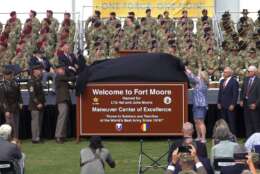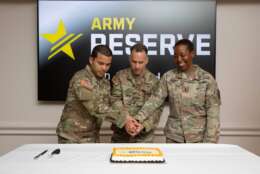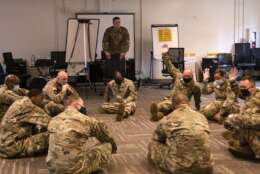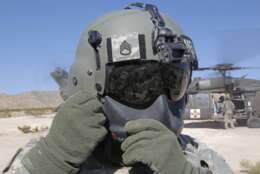Army
-
A new iteration of Project Convergence will feature a higher level exercise with international allies.
June 22, 2023 -
The top echelon is aware the U.S. Army has a problem with sexual harassment, sexual abuse, substance-use disorders, and suicide. In fact, since 2019, the Army has produced nearly 50 studies of these problems. But most of those studies do not include specific recommendations for dealing with these problems. That's according to an internal meta study done by the Army Audit Agency, and obtained by POGO: the Project on Government Oversight.
June 21, 2023 -
The self-driving vehicle is now a reachable asset for travelers in major American cities, after a ton of researching and testing. The Army, however, has it own need for the autonomous vehicles.
June 05, 2023 -
In an effort to adapt to modern acquisition policy, the Army is revamping its acquisition workforce.
May 29, 2023 -
The Pentagon wants to expand use of commercial products to speed up acquisition, but it wants more transparency in pricing.
May 17, 2023 -
Army camps and bases often feature architecture worth preserving. One example is Camp Dodge, an Army National Guard training facility in Iowa. Its construction and facilities management staff won a Pentagon award earlier this year for restoration of its 1907 gate house and perimeter fence.
May 16, 2023 -
In today's Federal Newscast: Fort Benning gets renamed. The members of the federal security cloud advisory committee have been made public. The Pandemic Relief Accountability Committee uncovers more dead people got paid COVID cash.
May 15, 2023 -
Camp Ripley is a 53,000-acre civilian and military training facility operated by the Minnesota National Guard. Keeping it up and maintaining it is no trivial matter.
May 05, 2023 -
A disagreement between the Army and the AFGE Local 2119 at Rock Island Arsenal has each side following a different contract, and no agreement in sight.
May 04, 2023 -
A new campaign from the Army Reserve looks to reach those that want to serve, but also still strive towards their goals in other career fields.
May 03, 2023 -
As the Army looks to another year of recruiting shortages, it takes a new look at how it trains recruiters.
May 03, 2023 -
Last week, the Senate Armed Services Committee (SASC) heard testimony, regarding a so-called "revolving door" between the Pentagon and companies to which it awards contracts. The SASC's Personnel Subcommittee presented a report from Sen. Elizabeth Warren (D-Mass.) on the topic.
May 02, 2023 -
Soldiers at a Fort Stewart innovation center design a device to detect temperature and humidity conditions that lead to mold.
April 28, 2023 -
Roughly 600 officers are implicated in a misunderstanding of Army policy that could require them to serve for three years longer than they'd planned
April 28, 2023 -
The Army pushes forward a fast track for software acquisition and new ways to manage IP licensing.
April 26, 2023















